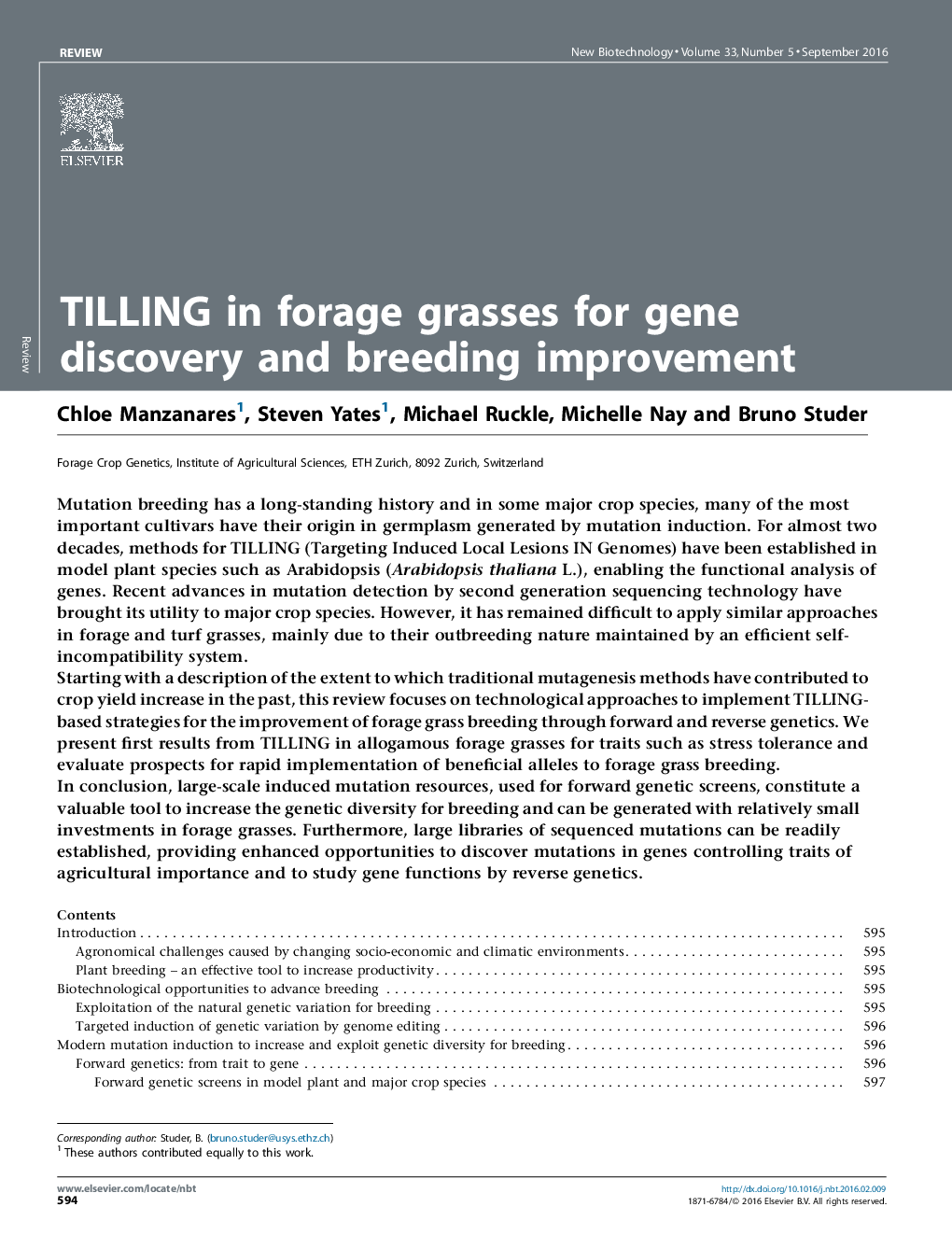| کد مقاله | کد نشریه | سال انتشار | مقاله انگلیسی | نسخه تمام متن |
|---|---|---|---|---|
| 33007 | 44952 | 2016 | 10 صفحه PDF | دانلود رایگان |
• Review of challenges and opportunities to exploit TILLING in forage grasses.
• Proposed TILLING methods to identify novel mutations in heterozygous populations.
• The first reported forward genetics screen in perennial ryegrass (Lolium perenne L.).
• Identification of putative abiotic stress tolerant mutants in contemporary germplasm.
Mutation breeding has a long-standing history and in some major crop species, many of the most important cultivars have their origin in germplasm generated by mutation induction. For almost two decades, methods for TILLING (Targeting Induced Local Lesions IN Genomes) have been established in model plant species such as Arabidopsis (Arabidopsis thaliana L.), enabling the functional analysis of genes. Recent advances in mutation detection by second generation sequencing technology have brought its utility to major crop species. However, it has remained difficult to apply similar approaches in forage and turf grasses, mainly due to their outbreeding nature maintained by an efficient self-incompatibility system.Starting with a description of the extent to which traditional mutagenesis methods have contributed to crop yield increase in the past, this review focuses on technological approaches to implement TILLING-based strategies for the improvement of forage grass breeding through forward and reverse genetics. We present first results from TILLING in allogamous forage grasses for traits such as stress tolerance and evaluate prospects for rapid implementation of beneficial alleles to forage grass breeding.In conclusion, large-scale induced mutation resources, used for forward genetic screens, constitute a valuable tool to increase the genetic diversity for breeding and can be generated with relatively small investments in forage grasses. Furthermore, large libraries of sequenced mutations can be readily established, providing enhanced opportunities to discover mutations in genes controlling traits of agricultural importance and to study gene functions by reverse genetics.
Journal: New Biotechnology - Volume 33, Issue 5, Part B, 25 September 2016, Pages 594–603
